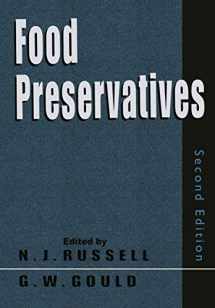
Food Preservatives
Book details
Summary
Description
For centuries man has treated food to prolong its edible life, and nowadays both traditional and modern preservatives are used widely to ensure the satisfactory maintenance of quality and safety of foods. There continues to be increased public concern about the use of food additives, including preservatives, resulting from a perception that some of them may have deleterious effects on health. However, as eating habits have changed with an emphasis on what has been popularly termed a `healthy diet', there is at the same time a concern that reduction in preservative usage could lead to loss of safety and protection from food poisoning. While some preservatives are coming under increasing regulatory pressure others, particularly more natural ones, are receiving increased attention and gaining in importance and acceptability.
This book supports the continued safe and effective use of preservatives within these current constraints. It therefore gives detailed information on the practical use of the major antimicrobial preservatives. Uniquely, it couples this with current understanding of their modes of action, at the levels of cellular physiology and biochemistry, in such a way as to provide a sound scientific basis for their efficacy. Such an approach also encourages the future logical development and use of preservatives.


We would LOVE it if you could help us and other readers by reviewing the book
Book review



